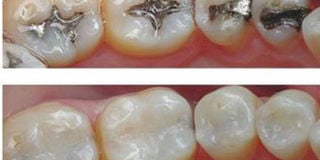What causes pain after dental filling?

What you need to know:
This subsequently leads to pain in the tooth. On the other hand, the pain may also arise if the dentist fills the wrong tooth.
Filling, with any type of dental cement occurs when a person has cavity (hole in the tooth). Such cavities develop because of poor oral hygiene and high intake of certain sugary foods.
Under normal circumstances, one should not feel pain after undergoing dental filling. However, on few occasions, this may happen and here is why.
Wrong diagnosis
When wrong diagnosis is made, it means the dentist may end up filling a person’s tooth with the wrong type of cement, which will end up causing reactions to the pulp or dentine.
This subsequently leads to pain in the tooth. On the other hand, the pain may also arise if the dentist fills the wrong tooth.
In such a case, the patient will continue complaining of pain without realising that treatment was administered the wrong way.
Having many cavities
This happens when the dentist sees only one cavity on the tooth, yet there could actually be more.
As a result, only one cavity may be filled while the other will be left untreated. In the end, a patient will continue experiencing pain.
However, these kinds of errors can be avoided if dental x-ray is carried out on any affected tooth before treatment is administered.
In health facilities where dental x-ray machines are not available, a more critical observation is required while examining a patient’s teeth.
Expired filling materials
The use of expired filling materials, just like use of expired drugs has side effects, including reaction to the dentine or pulp, which may cause pain.
Delayed treatment
Many patients with dental health problems seek care only after they feel too much pain. The most appropriate treatment in such case is to do root canal procedure, which is more expensive than undergoing dental filling.
If a patient insists on having dental filling instead, it will result into pain.
Other causes of pain include failure to clean teeth thoroughly before filling, wrong drugs prescribed after filling and making a permanent filling directly to tooth that requires thin lining.
The writer is a dentist
[email protected]




